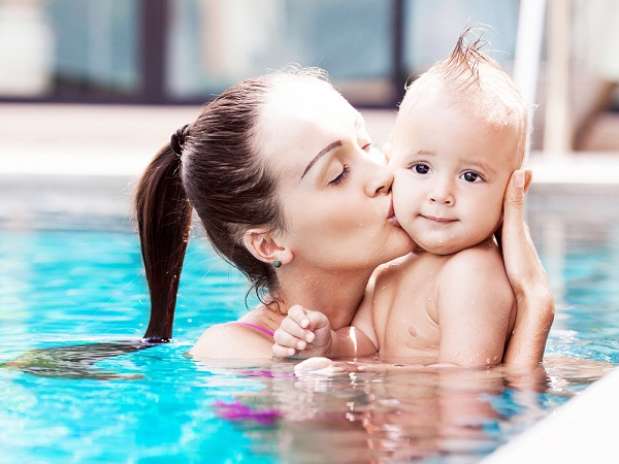Why is my baby crying in the pool? Should I continue working out while crying? Maybe my child doesn't like water, or is it torment? These and many other issues often have parents during toddler swimming lessons. What is also important to pay attention to the process of bathing enjoyable for you and your baby.
- Rule # 1. Calm mums/dads. This is perhaps the most important factor, in most cases it is the fear and uncertainty parents are the cause of the crying child. Classes in the pool you can often see this scene: the child is crying in the arms of my mother, but immediately calms down the coach. Usually this happens on the first sessions. Exercises seem the mother is too aggressive, and she does not dare to repeat them in full force. In this case, you must either overcome your fear, either for the first time to trust the lessons dad. Surely the Pope and his hands stronger, and stronger nerves, and to the process easier. Remember, calm and confident hands the baby feels safe.
- Rule # 2. Patience and again patience. No need to try for a month to show Olympic records. Your task – to save the baby's love of water. That save, it's not like water, he can't. Child 9 months living in the aquatic environment, it is for him enjoyable and comfortable. All save the sequence, watch. There are indicative dates for commencement of certain exercises, but the final choice is yours. Proceed to the next stage, but if you see that the baby is comfortable in the previous one.
- Rule # 3. Start as early as possible. Now, many pools offer classes to begin with 2-3 month babies. However, to start exercising at home as soon as possible. As soon as the umbilical wound heals, start classes in a large tub, because it is possible to learn basic exercises and techniques of diving. The ability to reflex breath persists until 2-3 months, so it's important to build on that innate skill and translate it into the category purchased. In addition the house is necessary to gradually adapt the child to the temperature of the pool (31-32 degrees).
- Rule # 4. To do as often as possible. A couple of weeks break can cost you all informed effort. So don't be lazy and exercise with your child every day. For example, it is possible to bathe the baby twice. In the morning in a small tub with hot water with the purpose of actually swimming. And in the evening to score the big tub with cool water and hone swimming skills. Do not neglect home workouts even with the start of classes in the pool. Overdo it in this difficult, but this is not to forget Rule 2.
- Rule # 5. Prepare the child to the lesson. In addition to the fear of a child crying in the water can cause the same reason as on land. The baby is hungry. Wants to sleep. Teeth climb. Strive to organize a child mode so that during class it didn't bother the natural needs. For example, feed the baby for a couple of hours before training. Let him sleep in the stroller or the car on the way to the pool. Replace the training in the pool for a more quiet experience at home, if a little worried.
- Rule # 6. Observe the child. All children are different, everyone likes different exercises. Someone who likes to swim on the belly, some on her back. Watch what prefer your child to repeat these exercises in his moments of fatigue. Sometimes moments of relaxation enough, the baby calmed down and continued the occupation to end.
- Rule # 7. Learn to distinguish the cry, the manipulation. All the kids are excellent psychologists and are often skillfully manipulated parents. Learn to distinguish the cry of pain, fatigue, fear) from crying-manipulation. This is useful not only in water but also in everyday life. Otherwise, the mother risks becoming in the pack horse without a minute of free time. In case of manipulation it is best to pretend that you notice nothing. A few minutes of exposure is usually enough to keep the boy accepted the situation and moved on to something else. Conversely, one sign of weakness can cost you dearly.
